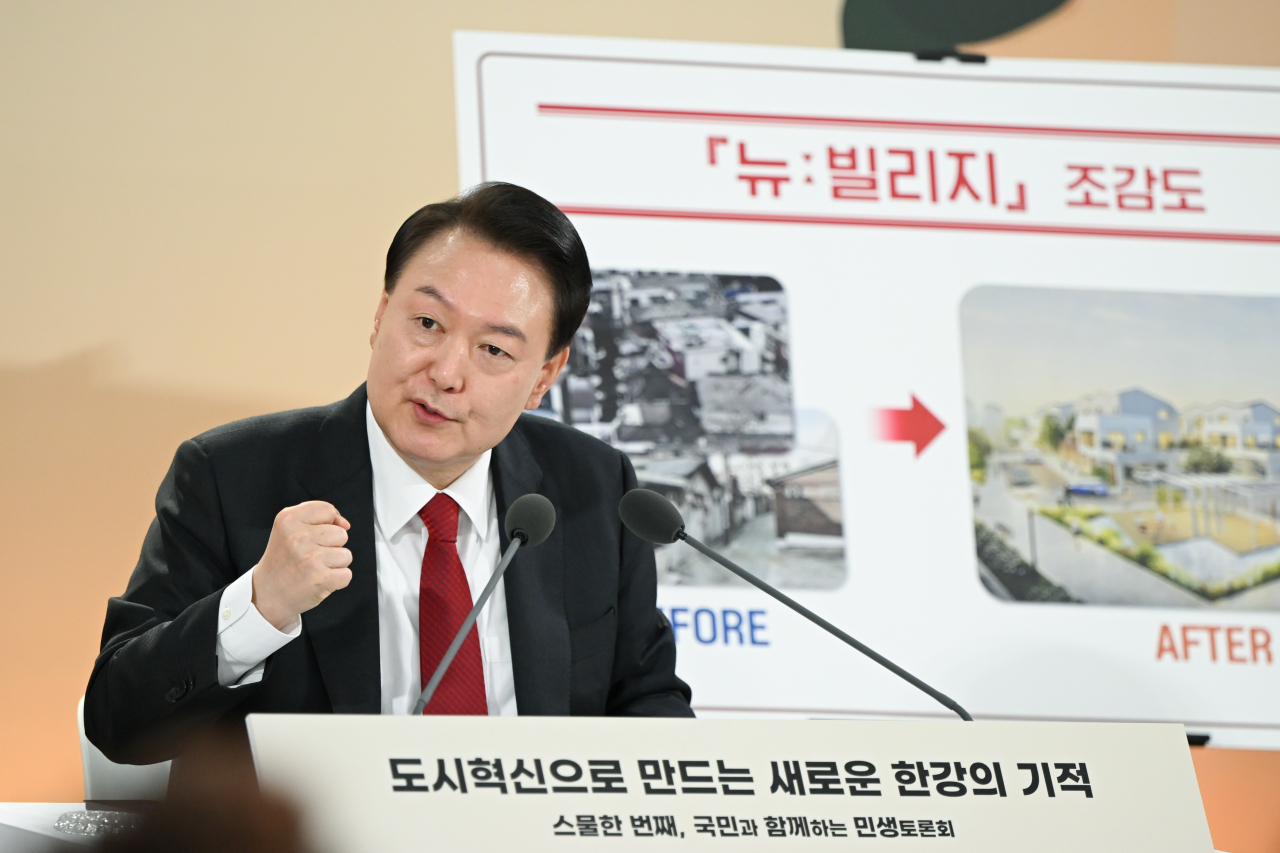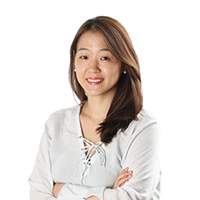Yoon envisions 'villa' redevelopment, culture and art belts
By Park Ga-young, Son Ji-hyoungPublished : March 19, 2024 - 18:11

President Yoon Suk Yeol on Tuesday pledged a total of 10 trillion won ($7.46 billion) to carry out housing redevelopment in older urban centers of Seoul.
Single-family freestanding homes or "dandok jutaek," and low-rise apartment buildings called "villa" will be turned into brand-new buildings, and half of the cost for their development will be through low-interest loans given to land developers by the state-run Korea Housing and Urban Guarantee Corp.
In Korea, land developers often find residential areas with single-family freestanding homes and low-rise apartments to be less lucrative in their bids to carry out land redevelopment due to zoning restrictions. According to Yoon, such homes account for 42 percent of all Seoul dwellings, and among them, nearly 90 percent are deemed not lucrative enough to attract development projects.
The government will also subsidize the construction of facilities to benefit the local community in those neighborhoods of low-rise residential buildings, such as parking lots, surveillance infrastructure and fitness centers.
Under the name, "New:Village Project," this redevelopment will primarily center around the older urban areas in two districts of western Seoul -- Yeongdeungpo-gu and Guro-gu -- according to Yoon, who lauded these particular areas for serving as "bases from which to advance" for Korea's export industries during the "Miracle on the Han River" in the latter half of the 20th century.
"The industrial trends and the function of the city are constantly changing and older areas of town are gradually becoming worn out," said Yoon the 21st policy debate in Mullae-dong, Yeongdeungpo-gu, Seoul. "The disparity in the quality of life should be addressed instantly for any Seoul residents, no matter where they live."
Yoon will also repeal a policy of the previous Moon Jae-in administration that has imposed a tax burden on homeowners who do not own multiple houses. Yoon was referring to Moon's policy to narrow the gap between the officially assessed land price -- a barometer for how a homeowner is taxed -- and the market value of a specific property on the land. Land prices rose 63 percent during Moon's five-year tenure.
Moreover, the Yoon administration will purchase 100,000 newly built small houses and supply them at low rents. Government subsidies for low-income households will also expand, as work is underway for the Yoon administration to spend a total of 4.3 trillion won on 1.5 million households.
Infusing culture and art into cities
Along with plans to redevelop Seoul's urban areas and raise citizens' quality of life, Yoon said making art flourish in Seoul will make the city a "top global city."
The government will establish representative cultural arts spaces to foster an ecosystem of creation, distribution, and consumption of culture and art throughout Seoul and beyond, the Ministry of Culture, Sports and Tourism announced Tuesday.
At the center of the plan lies the establishment of culture and art belts by repurposing older facilities in the city center into cultural spaces.
A performing arts belt that encompasses the areas of Seoul Station, Myeong-dong and Namsan was announced Tuesday. The belt includes a new performing arts creation center to open on the site of The Freedom Center in 2026. The Freedom Center is located across from the National Theater of Korea in Jangchung-dong.
Another pillar of the belt, the Seoul Station area in Jung-gu will see a new cultural space open in 2028 with the revamp of the National Theater Company of Korea site. The National Jeongdong Theater is currently preparing for an expansion of its performance hall with completion planned for 2028.
Another culture and art belt will link Hongdae and Seoul Danginri Thermal Power Plant, Korea's first power facility, as a hub of youth arts. The former power plant will be transformed into the Danginri Cultural Creative Power Plant in 2026.
In addition, the government laid out plans to build cultural infrastructure outside of Seoul, leveraging the distinct characteristics of each region.
Taking advantage of their proximity to Seoul, Gyeonggi Province and Gangwon Province will have open-air museums, creating an art center by repurposing former US military bases.
In Daejeon, home to the Korea Advanced Institute of Science & Technology, facilities specializing in cultural technology will be established. The old South Chungcheong Provincial Office building will be repurposed to create the National Museum of Modern and Contemporary Art, Daejeon branch.
Areas near the Gyeongsang Provinces will see the creation of cultural arts hubs by constructing genre-specific performance venues such as musical theaters in Daegu and classical music halls in Busan.
In the Jeolla Provinces, integrating existing resources with events like the Jeonju Calligraphy Biennale will be pursued to establish traditional cultural facilities in Jeonju.











![[Kim So-hyun] The quiet taxi driver from Paris](http://res.heraldm.com/phpwas/restmb_idxmake.php?idx=644&simg=/content/image/2024/04/25/20240425050891_0.jpg&u=)








